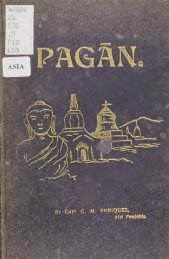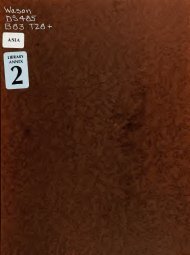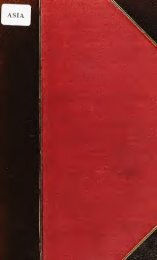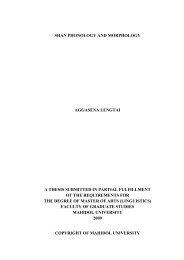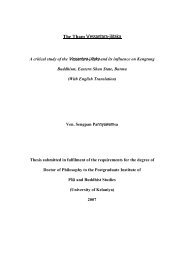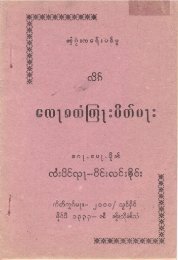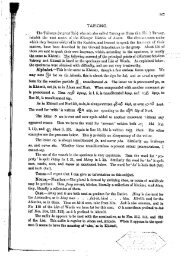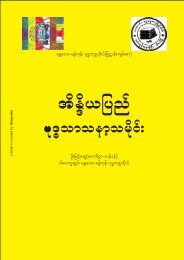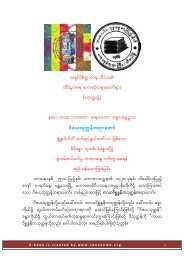The Tai Ahom National Council Memo Scheduling
The Tai Ahom National Council Memo Scheduling
The Tai Ahom National Council Memo Scheduling
You also want an ePaper? Increase the reach of your titles
YUMPU automatically turns print PDFs into web optimized ePapers that Google loves.
<strong>The</strong> burial mound is called moi-dam where the dam of the dead resides for eternity.<br />
Hence the burial place of the dead (moi-dam) is sacred to the <strong>Ahom</strong> and therefore carefully<br />
maintained. In Upper Assam one can see at some places rows of raised mound, or moi-dam<br />
even today. Shihabuddin Talish, the Persian Waqia Navis of the Mughal Emperor Aurangzeb<br />
who accompanied Nawab Mir Jumla to Garhgaon, the <strong>Ahom</strong> capital in 1662 A.D saw the<br />
royal burial mounds at Charaideo, the center of <strong>Ahom</strong> royal burial. Shihab-ud-din noted the<br />
digging up of the moi-dam by the Mughal army thus<br />
“<strong>The</strong>y bury their dead with the head towards the East and feet towards the West. <strong>The</strong><br />
chiefs erect funeral vaults for their dead, kill the women and servants of the deceased,<br />
and put necessaries, etc., for several years, viz. elephants, gold and silver vessels,<br />
carpets, clothes, and food, into the vaults. <strong>The</strong>y fix the head of the corpse rigidly with<br />
poles, and put a lamp with plenty of oil and a mash’allchi [torchbearer] alive into the<br />
vault, to look after the lamp. Ten such vaults were opened by order of the Nawab, and<br />
property worth about 90,000 Rupees was recovered. In one vault in which the wife of<br />
a Rajah about 80 years ago had been buried, a golden pandan was found, and the pan<br />
in it was still fresh.” (Fathiya-I-Ibriya, translated by H. Blochmann and published in<br />
the Journal of the Asiatic Society of Bengal, 1972, p. 82).<br />
Graves Are Sacred:<br />
<strong>The</strong> royal graves were carefully maintained and were considered sacred. “It was the custom<br />
of my ancestors”, says Purandar Singh, the last <strong>Ahom</strong> king, “from the time of Chukapha<br />
Rajah not to burn their dead but to bury them, and when any royal person died all the<br />
ornaments and golden plates to the value of from 20,000 to 25,000 rupees were buried with<br />
him, and the body was buried at Churry Deo and mound raised over it. It was called a<br />
moidam”, (Swargadeo Purandar Singha’s complaint against the Assam Company for<br />
cultivating tea over the moidams at Charaideo in February, 1840). In Letter No 67 of April<br />
1840 to the Political Secretary to the Governor-General by Francis Jenkins, the Agent<br />
to the Governor-General in the North-East at Guwahati). After hinduisation the ashes and<br />
bones were buried and mound was raised over it. King Kamaleswar Singha (1810-15) was<br />
buried at Charaideo which is recorded the chronicle thus “<strong>The</strong> dead body of the deceased<br />
king was conveyed to Mulberry garden (Charaideo) where it was burnt there. A mound was<br />
raised upon the grave. All the <strong>Ahom</strong> including the Deodhai, Mohan and Bailung priests were




